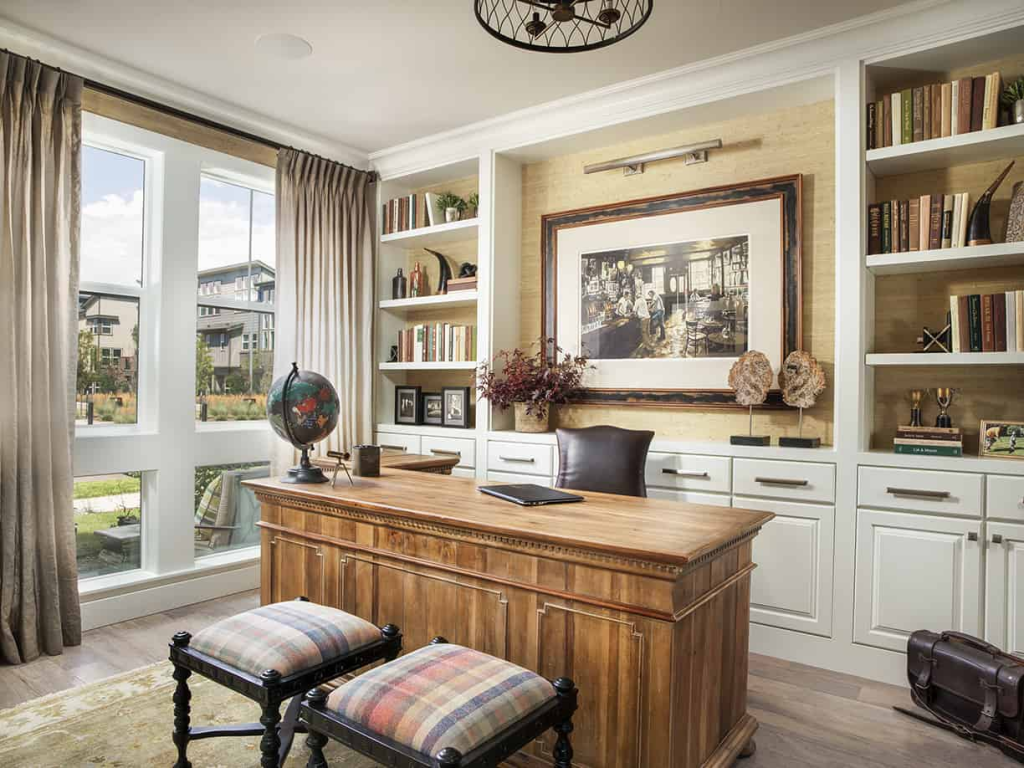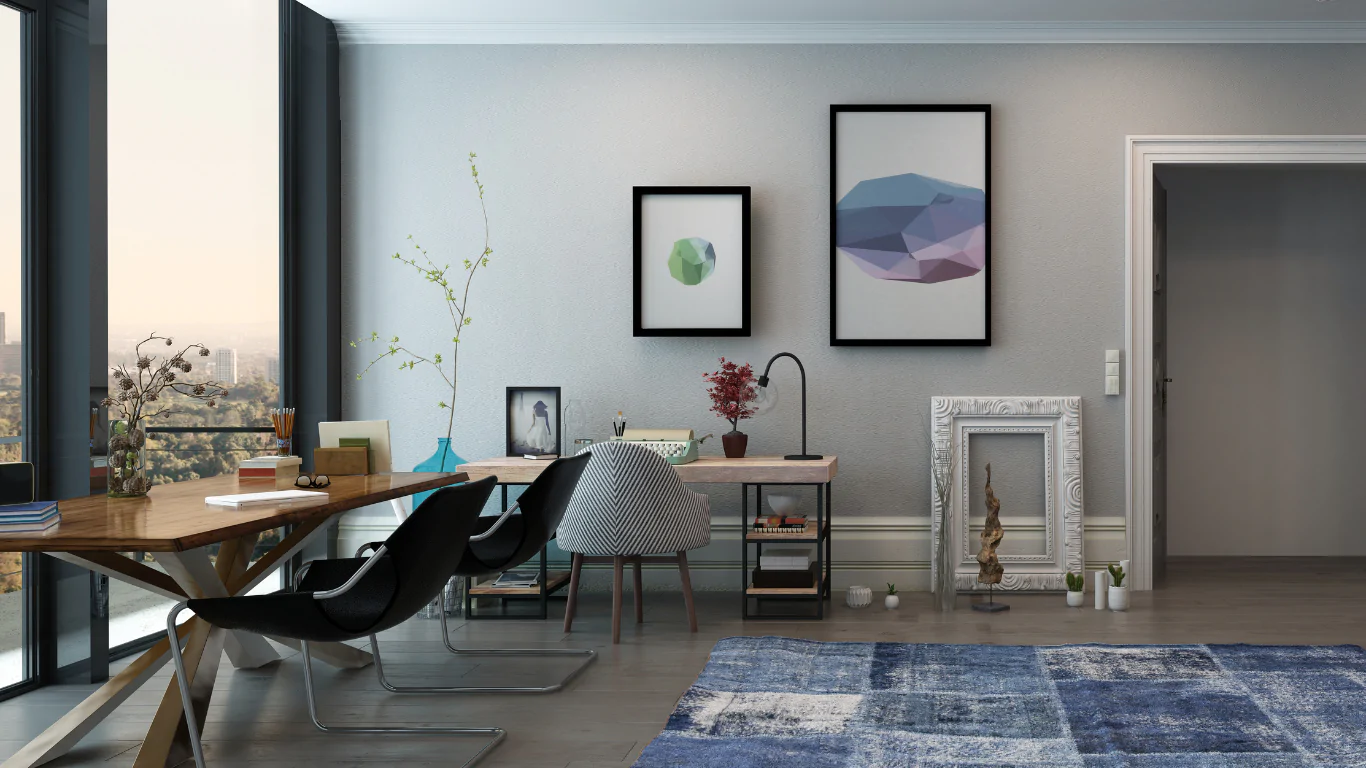Working from home has become more than just a trend—it’s a lifestyle. A well-designed home office can dramatically improve your productivity, mood, and creativity. But creating a space that is both functional and stylish can be challenging. From furniture selection to lighting, every choice impacts your efficiency and overall satisfaction. This guide will help you craft a home office that balances productivity with elegance, so every workday feels inspiring.
Assessing Your Needs Before Designing Your Home Office
Define Your Work Style and Requirements
Before choosing furniture or colors, consider how you work. Are you primarily focused on creative tasks, analytical work, or virtual meetings? Your workflow determines the type of desk, chair, and storage you need. A designer may need a large workspace with multiple monitors, while someone focused on writing might prioritize a quiet nook with minimal distractions. Understanding your workflow is the first step to building an office that supports your goals.
Choosing the Right Location at Home
Selecting the right spot in your home is crucial. Ideally, a home office should be in a quiet area, away from high-traffic zones. Natural light is a bonus, as it enhances energy levels and reduces eye strain. If a separate room isn’t available, find a corner that allows privacy and minimal interruptions. Consider noise reduction strategies, such as rugs, curtains, or soundproofing panels, to maintain concentration.
Choosing Furniture for Productivity and Style

Desk Selection
The desk is the centerpiece of any home office. Adjustable desks are ideal for alternating between sitting and standing, which helps reduce fatigue. Classic wooden desks provide warmth and sophistication, while sleek, minimalistic designs offer a modern touch. Choose a desk that fits both the space and your personal work habits, allowing enough room for equipment and a comfortable workflow.
Ergonomic Chair Choices
Investing in a high-quality chair is essential for posture and long-term health. Look for chairs with adjustable height, lumbar support, and comfortable cushioning. The style of the chair should also complement the overall aesthetic of your office, blending functionality with elegance.
Smart Storage Solutions
Storage keeps your office organized and visually appealing. From cabinets to shelving, storage solutions should prevent clutter without overwhelming the room. Hidden compartments or multi-functional furniture pieces are ideal for maintaining a clean, stylish environment.
Color Schemes and Lighting for Focus and Mood
Best Colors for Productivity
Colors influence focus and creativity. Soft neutrals such as beige or pale gray create a calm environment, while muted greens and blues enhance concentration. Accent walls in energizing colors like mustard or teal can inspire creativity without being distracting. Colors should reflect your personality while supporting productivity.
Lighting Your Workspace
Proper lighting is crucial. Natural light improves mood and alertness, but it’s important to manage glare with blinds or curtains. Desk lamps with adjustable brightness can provide targeted light for detailed tasks. Overhead lighting should be soft yet sufficient to illuminate the room evenly, avoiding harsh shadows that cause eye strain.
Incorporating Technology Without Clutter
Modern home offices require technology, but too many devices can lead to chaos. Essential gadgets like monitors, laptops, keyboards, and docking stations should be organized with cable management systems to maintain a clean aesthetic. Smart office devices, such as voice assistants and smart plugs, enhance efficiency by simplifying repetitive tasks.
Personal Touches and Style Elements

Adding Plants and Greenery
Plants are not only decorative but also improve air quality and reduce stress. Small potted plants, hanging planters, or a corner plant can add life to the room. Choose low-maintenance varieties like succulents or snake plants if you’re often busy.
Artwork and Decor
Incorporating art and personal decor can make your home office uniquely yours. Wall art, framed photographs, or motivational quotes inspire creativity and add character. These elements should harmonize with the color palette and overall style of the office.
Textiles and Comfort
Textiles like rugs, curtains, or cushions add warmth and texture, creating a comfortable, inviting atmosphere. Even subtle additions, such as a soft throw on a chair, can transform the workspace into a more appealing environment.
Maintaining Productivity in a Stylish Space
Organizing Daily Workflows
A stylish office is only effective if it supports productivity. Arrange your desk so that frequently used items are easily accessible. Keep the workspace uncluttered to maintain focus. A designated area for supplies, paperwork, and technology will streamline your daily routine.
Regular Office Maintenance
Maintaining a home office goes beyond cleaning. Rotate decor seasonally to refresh the space, adjust lighting as needed, and evaluate workflow periodically. A tidy, dynamic office prevents burnout and promotes ongoing productivity.
Designing a productive and stylish home office requires thoughtful planning, balancing functionality with aesthetics. By considering your workflow, investing in quality furniture, incorporating color and lighting strategically, and adding personal touches, you can create a workspace that boosts efficiency while reflecting your style. A well-designed office is more than a room—it’s a space that empowers you to work with focus and inspiration every day.
